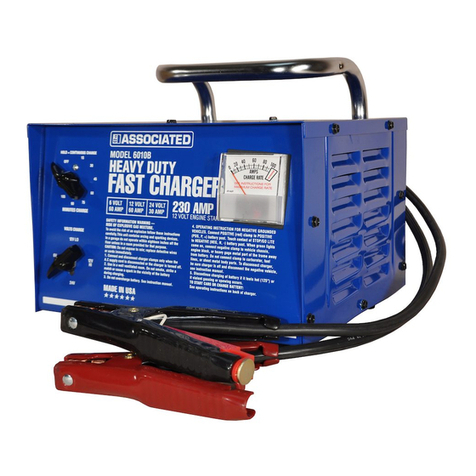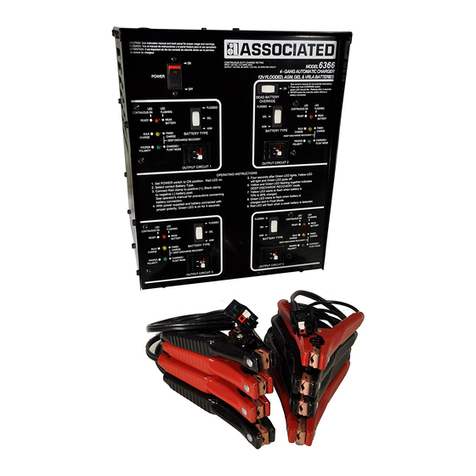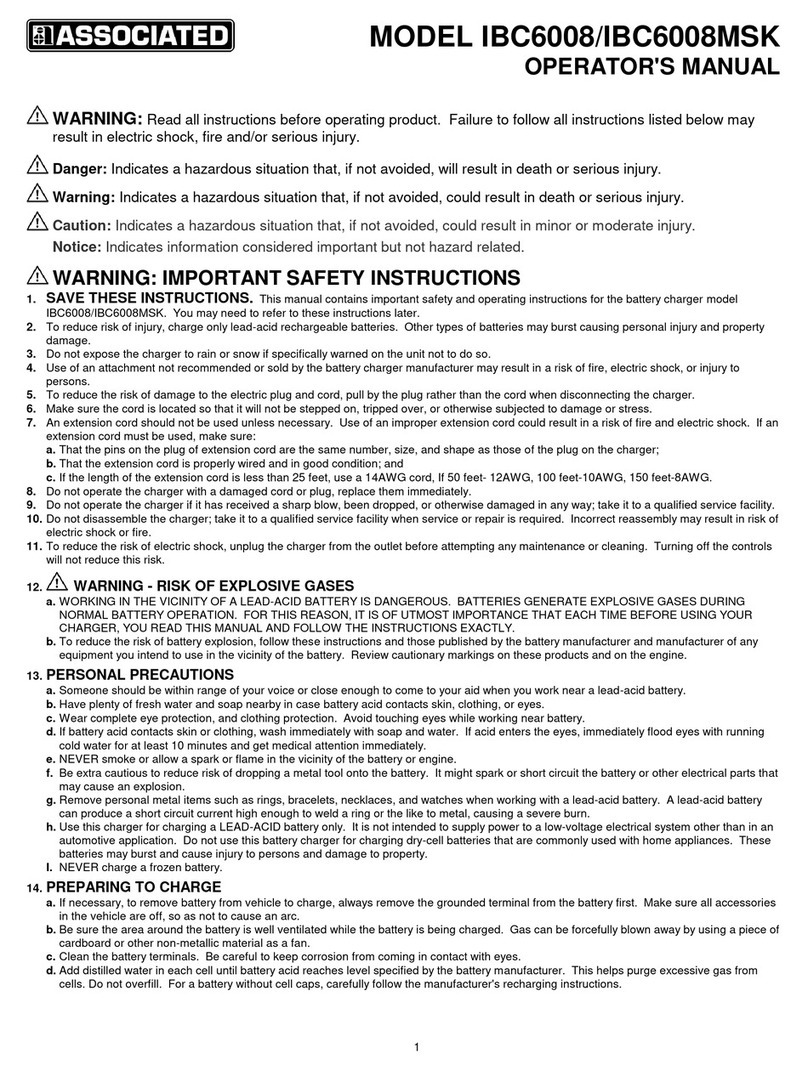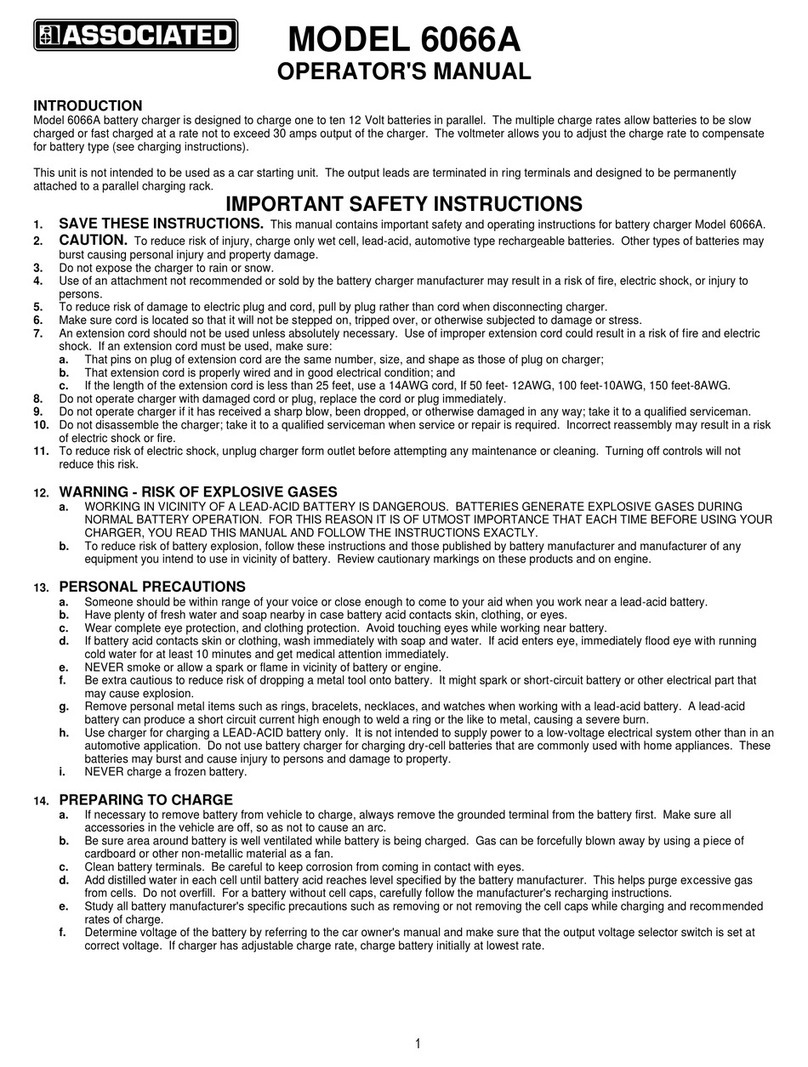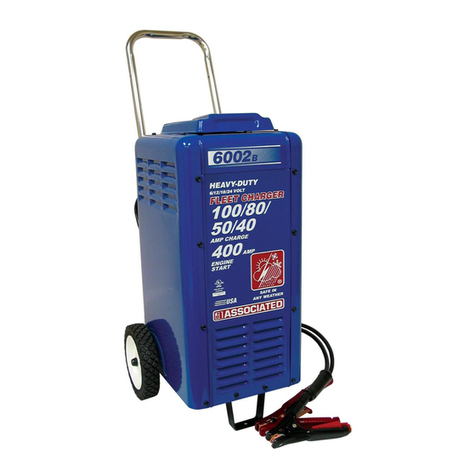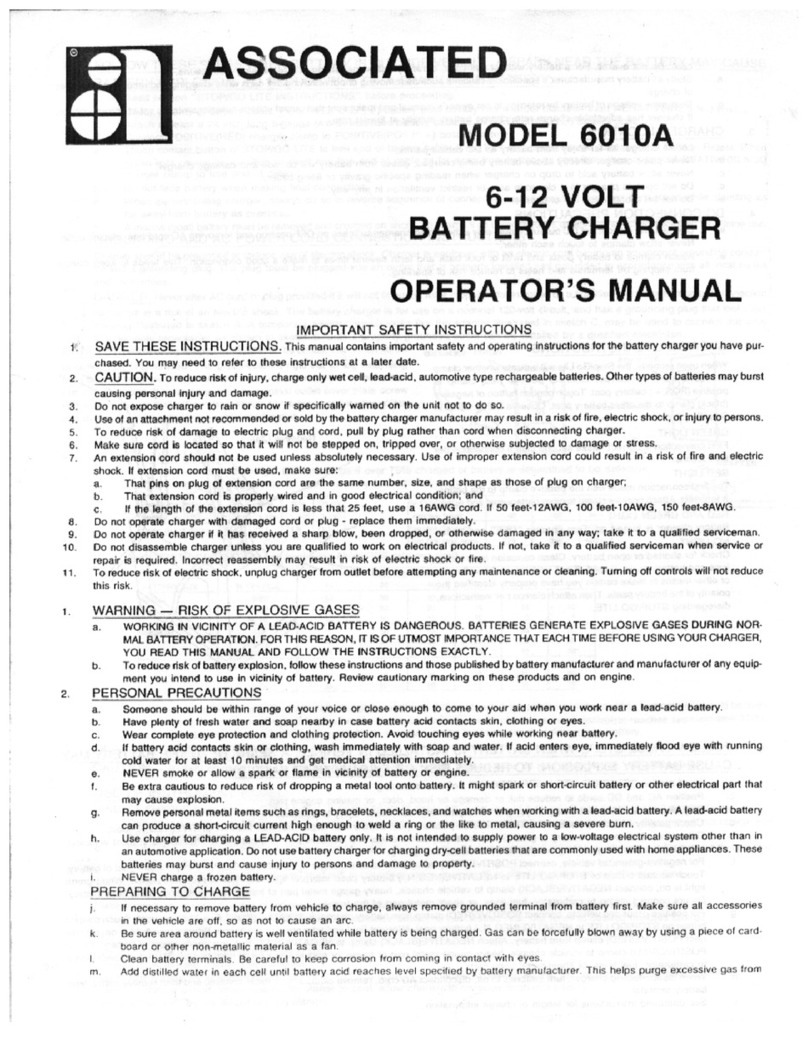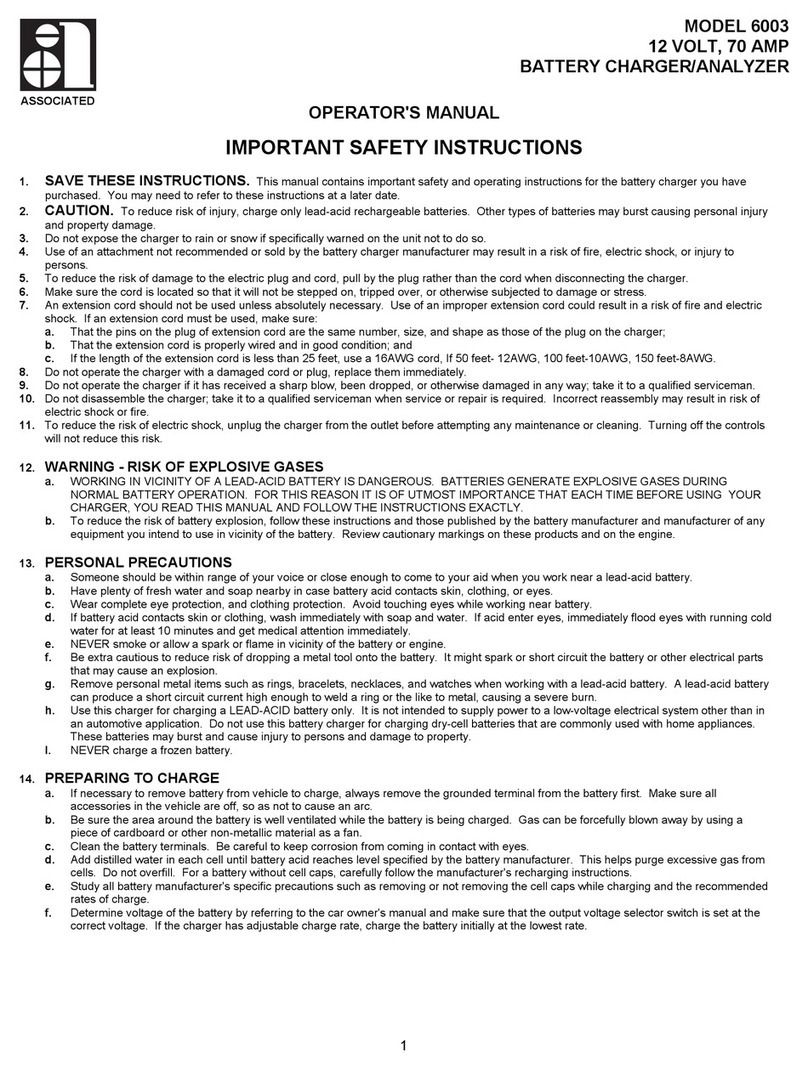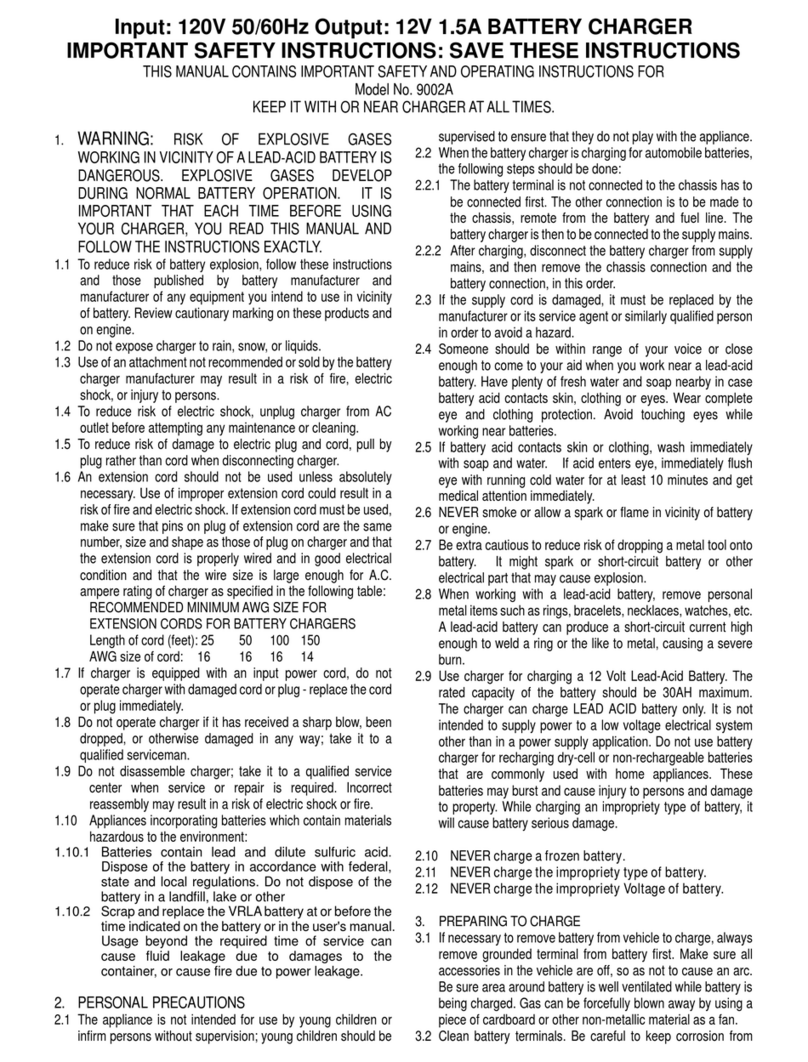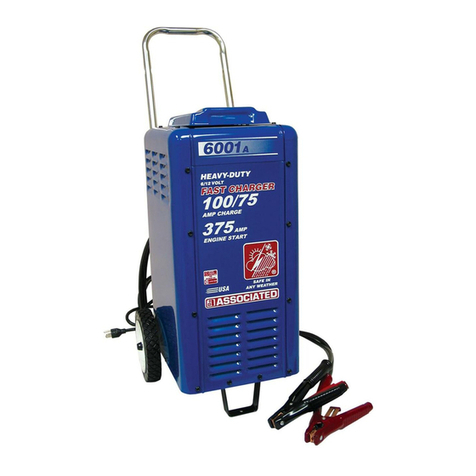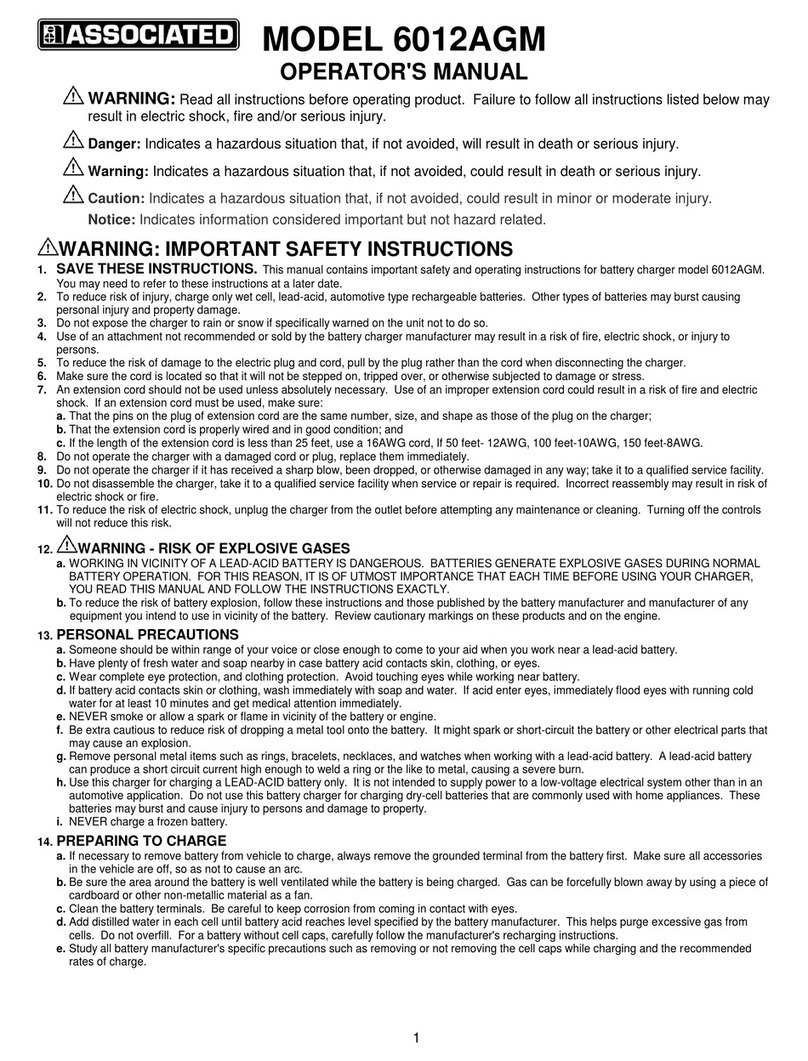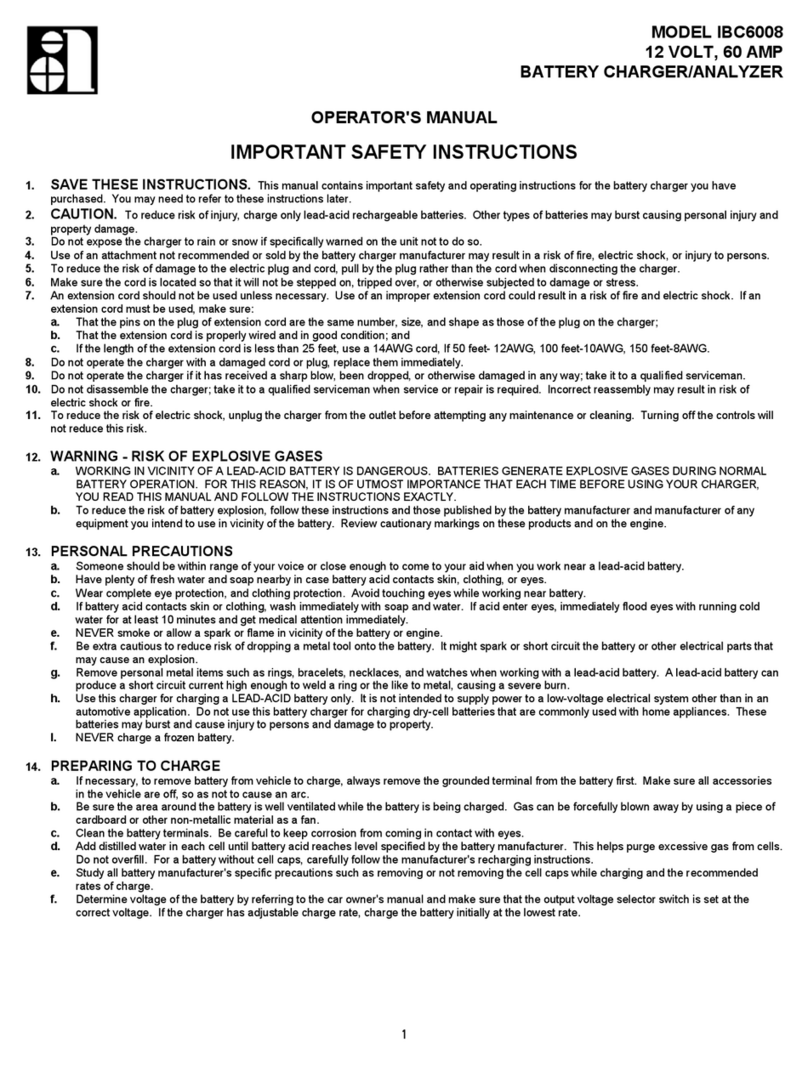b. S'assurer de la bonne ventilation des lieux lors de la charge de la batterie. On peut dissiper les gaz en utilisant comme éventail un morceau
de carton ou un article non métallique
c. Nettoyer les bornes de la batterie. Faire bien attention que les yeux n'entrent pas en contact avec les matières corrodées.
d. Ajouter de l'eau distillée dans chacune des cellules de la batterie, jusqu'à ce que le niveau d'acide dans la batterie atteigne celui qui est
spécifié par le fabricant. Cela facilite la purge de gaz excédentaires des cellules. Ne pas dépasser le niveau spécifié. Suivre attentivement
les instructions de charge du fabricant pour les batteries qui n'ont pas de bouchons de cellules.
e. Étudier toutes les précautions spécifiques du fabricant de la batterie tels celles qui concernent le retrait ou non des bouchons de cellules lors
de la charge, ou encore le régime de charge recommandé.
f. Déterminer la tension de la batterie en se référant au manuel du véhicule et s'assurer que le sélecteur de tension de sortie du chargeur est
réglé à la bonne tension. Si le chargeur offre un régime de charge réglable, charger initialement la batterie au régime de charge le plus
faible.
15. EMPLACEMENT DU CHARGEUR
a. Installer le chargeur aussi loin de la batterie que les câbles c.c. le permettent.
b. Ne jamais placer le chargeur directement au-dessus d'une batterie pendant la charge; les gaz s'échappant de la batterie peuvent corroder et
endommager le chargeur.
c. Ne jamais laisser l'acide de la batterie s'égoutter sur le chargeur pendant la lecture de densité ou le remplissage de la batterie.
d. Ne pas utiliser le chargeur dans une endroit fermé ou mal ventilé en aucune circonstance.
e. Ne pas placer la batterie sur le chargeur.
16. PRÉCAUTIONS RELATIVES AUX CONNEXIONS c.c.
a. Brancher et débrancher les pinces de sortie c.c. seulement après avoir mis tous les interrupteurs du chargeur à la position d'arrêt et
débranché le cordon d'alimentation c.a. de la prise de courant. Ne jamais les pinces se toucher.
b. Brancher les pinces aux bornes de la batterie puis faire pivoter ou basculer la pince d'avant en arrière plusieurs fois pour obtenir un bon
contact afin d'empêcher les pinces de plisser de même que pour réduire le risque d'étincelles.
17. RESPECTER LES ÉTAPES SUIVANTES LORSQUE LA BATTERIE SE TROUVE À L'INTÉRIEUR DU
VÉHICULE. UNE ÉTINCELLE À PROXIMITÉ DE LA BATTERIE PEUT LA FAIRE EXPLOSER. POUR
RÉDUIRE LE RISQUE D'ÉTINCELLES PRÈS DE LA BATTERIE, IL FAUT :
a. Positionner les cordons c.c. et c.a. de façon à réduire les risques de dommages pouvant être causés par le capot, les portières, ou des
pièces mobiles du moteur.
b. Se tenir à distance des pales de ventilateur, courroies, poulies et autres pièces pouvant causer des blessures corporelles.
c. Vérifier la polarité des bornes de la batterie. En général, la borne positive (POS, P, +) a un diamètre plus grand que celui de la borne
négative (NEG, N, -).
d. Déterminer quelle borne est mise à la masse (reliée au châssis). Si la borne négative est mise à la masse au châssis (comme dans la
plupart des véhicules) voir l'article (e). Si la borne positive est mise à la masse au châssis, voir l'article (f).
e. Pour un véhicule avec masse au négatif, brancher la pince positive (ROUGE) du chargeur de batterie à la borne positive (POS, P, +) non-
mise à la masse de la batterie. Brancher la pince négative (NOIR) au châssis du véhicule ou au bloc moteur à distance de la batterie. Ne
jamais brancher la pince au carburateur, aux conduites d'essence, ou aux pièces du châssis faites de tôle mince. Brancher à une pièce
métallique épaisse du châssis ou au bloc moteur.
f. Pour un véhicule avec masse au positif, brancher la pince négative (NOIR) du chargeur de batterie à la borne négative (NEG, N, -) non-mise
à la masse, de la batterie. Brancher la pince positive (ROUGE) au châssis du véhicule ou au bloc moteur à distance de la batterie. Ne
jamais brancher la pince au carburateur, aux conduites d'essence, ou aux pièces du châssis faites de tôle mince. Brancher à une pièce
métallique épaisse du châssis ou au bloc moteur.
g. Pour débrancher le chargeur, mettre les interrupteurs sur "O" (off), débrancher le cordon d'alimentation c.a., débrancher la pince du châssis
du véhicule, puis débrancher la pince de la borne de la batterie, dans cet ordre.
h. Pour toute information relative au temps de charge, voir les instructions d'utilisations.
18. RESPECTER LES ÉTAPES SUIVANTES LORSQUE LA BATTERIE SE TROUVE À L'EXTÉRIEUR DU
VÉHICULE. UNE ÉTINCELLE À PROXIMITÉ DE LA BATTERIE PEUT LA FAIRE EXPLOSER. POUR
RÉDUIRE LE RISQUE D'ÉTINCELLES PRÈS DE LA BATTERIE, IL FAUT:
a. Vérifier la polarité des bornes de la batterie. En général, la borne positive (POS, P, +) a un diamètre
plus grand que celui de la borne négative (NEG, N, -).
b. Relier à la borne négative (NEG, N, -) de la batterie un câble pour batterie isolé de calibre 6 (AWG)
d'au moins 24 pouces de long.
c. Brancher la pince positive (ROUGE) du chargeur à la borne positive (POS, P, +) de la batterie.
d. Se tenir à distance de la batterie et dégager l'extrémité du câble puis brancher la pince négative
(NOIR) du chargeur à l'extrémité du câble.
e. Ne pas faire face à la batterie pour effectuer le dernier branchement.
f. Pour débrancher le chargeur, suivre en sens inverse les étapes relatives au branchement et
débrancher la première connexion tout en se tenant aussi loin que possible de la batterie.
g. Les batteries pour bateaux doivent être démontées et chargées à terre. La charge à bord d'un bateau exige un instrument mis au point
spécialement pour applications maritimes.
19.INSTRUCTIONS DE MISE À LA TERRE ET DE CONNEXION DU CORDON C.A.
Le chargeur doit être mis à la masse afin de réduire le risque d'électrocution. Le chargeur est muni d'un cordon électrique pourvu d'un
conducteur de mise à la terre de l'équipement et d'une fiche avec la terre. La fiche doit être branchée dans une prise adéquatement installée
et mise à la terre conformément aux règlements et codes en vigueur.
